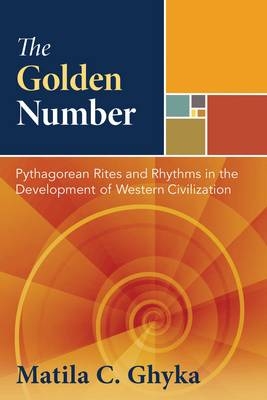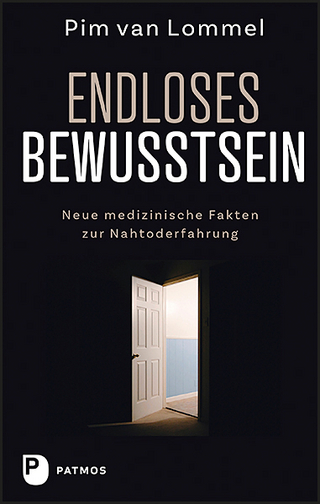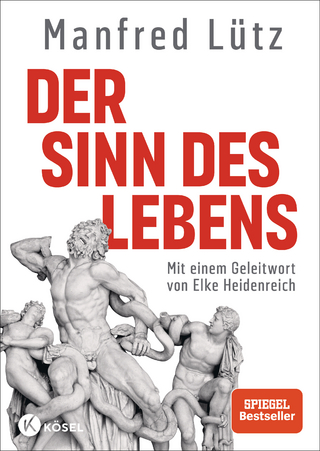The Golden Number
Inner Traditions Bear and Company (Verlag)
978-1-59477-100-2 (ISBN)
The Golden Number, or Phi (Φ), is a geometric ratio found throughout nature, often underlying the dimensions of objects considered especially beautiful. Simplified as 1.618 and symbolized by the Fibonacci sequence, the Golden Number represents the unique relationship within an object where the ratio of a larger part to a smaller part is the same as the ratio of the whole to the larger part. It appears in the proportions of the human face and body as well as in the proportions of animals, plants, and celestial bodies. Presenting Matila Ghyka’s classic treatise on the Golden Number for the first time in English, this book reveals the many ways this ratio can be found not only in the organic forms of nature--such as in the spirals of shells or the number of petals on a flower--but also in the most beautiful and highest creations of humanity. One of the most important concepts of sacred geometry, its mysteries were passed down in an unbroken line of transmission from the Pythagorean brotherhoods through the medieval builders’ guilds to the secret societies of 18th-century Europe. Ghyka shows how the secrets of this divine proportion were not sought merely for their value in architecture, painting, and music, but also as a portal to a deeper understanding of the spiritual nature of beauty and the hidden harmonies that connect the whole of creation.
Prince Matila Costiesco Ghyka (1881-1965) was a Romanian mathematician, historian, philosopher, and diplomat, who served as the Plenipotentiary Minister in the United Kingdom during the late 1930s. He was also a visiting professor of aesthetics at the University of Southern California and at the Mary Washington College in Virginia. His previous books in English include The Geometry of Art and Life and an autobiography, The World Mine Oyster. Though his prolific literary output includes fiction, poetry, and philosophy, the overarching concern of his work was a synthesis of higher mathematics and the arts.
Publisher's Preface
Foreword by Paul Valéry
Introduction
Part 1 RHYTHMS
Chapter 1 From Number to Harmony
Chapter 2 The Divine Proportion
Chapter 3 The Geometric Canons of Mediterranean Architecture
Chapter 4 The Orchestration of Volumes and Architectural Harmony
Chapter 5 From Rhythm to Incantation
Chapter 6 From Incantation to Love
Part 2 Rites
Chapter 7 Pythagoras
Chapter 8 The Lamp under the Bushel
Chapter 9 Esotericism and Politics:From Plato’s Cave to the Masonic Lodges
Chapter 10 Modern Science and the Return to Pythagoras
Chapter 11 Life Force, Rhythm, and Duration
Chapter 12 The Phoenix of Metapontum and the Duel of the Magicians
Conclusion
Index
ILLUSTRATIONS
1. Polygonal figurate numbers and gnomons
2. Golden section, pentagon, pentagram, phi rectangle
3. The five regular polyhedrons (Platonic solids)
4. The five Platonic solids inscribed inside one another
5. Star dodecahedron with twenty vertices
6. Star dodecahedron with twelve vertices
7. Icosahedron and dodecahedron by Leonardo da Vinci for Pacioli’s Divina Proportione
8. Semi-regular polyhedrons by Leonardo da Vinci
9. Star dodecahedron and stella octangula by Leonardo da Vinci
10. Pentagonal symmetries: Φ rectangle and spiral of harmonious growth
11. Three growth patterns governed by the golden section
12. Hexagonal symmetries (crystals)
13. Pentamerous flowers
14. Pentamerous calyx (Symphytum officinale)
15. Cardium pseudolima and Solarium perspectivum
16. Nautilus pompilius and Triton tritonis (X-rays)
17. Man-Microcosm according to Agrippa von Nettesheim and the directing icosahedron in the choreography manual by R. von Laban
18. Miss Helen Wills (Mrs. F. Moody)
19. Harmonic analysis of the previous photograph
20. Explanation of the diagram in plate
21. Isabella d’Este, by Leonardo da Vinci
22. Male nude, harmonic analysis (square and golden section)
23. The “Microcosm”
24. Hellenistic bas-relief
25. Harmonic rectangles (Φ and 5) based on Hambidge
26. Harmonic decomposition of drawings according to Hambidge’s method
27. Egyptian harmonic drawings
28. Harmonic decomposition of the Φ rectangle
29. Systems of proportion obtained by the polar segmentation of the circle
30. Plans of an Egyptian temple and the rock temple of Mira
31. Typical Greek temple designs
32. Mössel’s typical diagrams for an early Christian basilica and Gothic church
33. Typical Gothic designs according to Mössel
34. Establishing the transverse proportion of Gothic naves
35. Canon of Pythagoras
36. Relationship between the Pythagorean scale and the columns of Greek temples
37. Milan cathedral; plan reproduced by Caesariano in his commentary on Virtruvius
38. Milan cathedral (elevation and vertical section by Caesar Caesariano, 1521)
39. Explanatory diagram for plate
40. Small temple of Minerva in Rome, harmonic analysis
41. Pantheon of Rome, harmonic analysis
42. San Stefano Rotunda in Rome, harmonic analysis
43. Explanatory diagram for the San Stefano plan
44. The Great Pyramid, meridian section
45. Miloutine Borissavlievitch’s optico-physiological perspectivism
46. Projected analogies by Miloutine Borissavlievitch’s perspectivism
47. Hieronymus Bosch, The Garden of Earthly Delights
48. Maat, goddess of truth
49. Rose window of Amiens, magical pentacles, cinquefoil from the Saint-Chapelle
50. Masons’ marks
51. Gothic masons’ marks
52. Gothic symphony (Burgos cathedral)
53. Baroque catharsis (Melk Abbey)
54. Baroque catharsis (Melk Abbey)
55. Baroque catharsis, monstrance
56. The mystic handshake
57. Square and plumb line on a funerary mosaic in Pompeii
58. Christ the “Initiate,” Saint Stephen’s Cathedral, Vienna
59. Le Corbusier and Pierre Jeanneret, regulating drawings
60. Le Corbusier and Pierre Jeanneret, regulating drawing
61. Harmonic variations on the dodecahedron
62. Harmonic variations on the icosahedron
63. Lilies
64. Ancient nude: Bronze in the style of Polykleitos
65. Another view of plate
66. The new Nordic naturism
| Erscheinungsdatum | 25.11.2016 |
|---|---|
| Einführung | Paul Valéry |
| Zusatzinfo | 66 full-page b&w illustrations |
| Verlagsort | Rochester |
| Sprache | englisch |
| Maße | 152 x 229 mm |
| Gewicht | 780 g |
| Themenwelt | Sachbuch/Ratgeber ► Gesundheit / Leben / Psychologie ► Esoterik / Spiritualität |
| Mathematik / Informatik ► Mathematik ► Arithmetik / Zahlentheorie | |
| ISBN-10 | 1-59477-100-6 / 1594771006 |
| ISBN-13 | 978-1-59477-100-2 / 9781594771002 |
| Zustand | Neuware |
| Haben Sie eine Frage zum Produkt? |
aus dem Bereich




